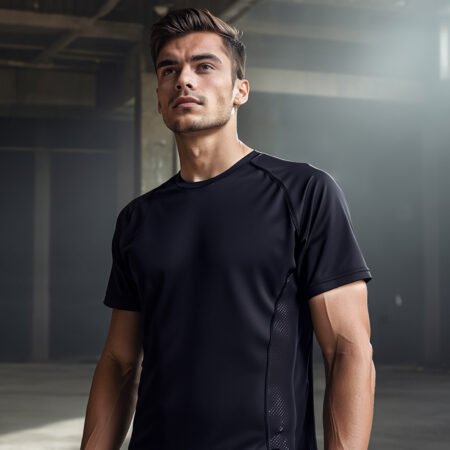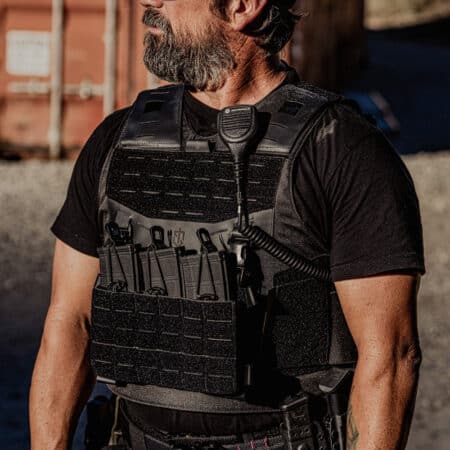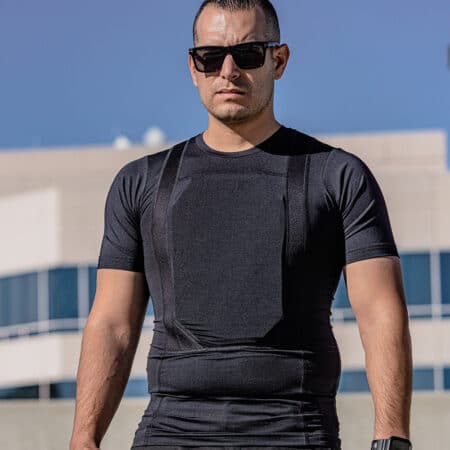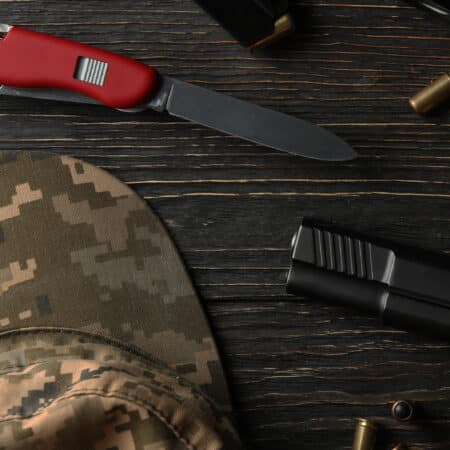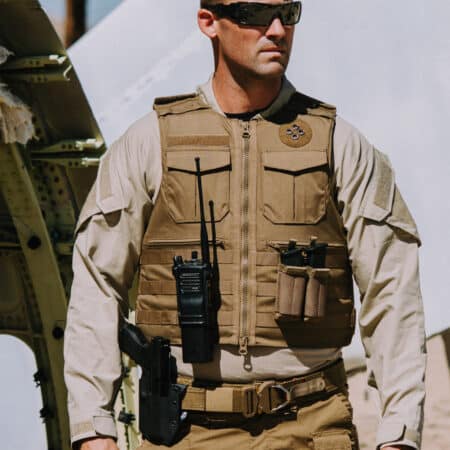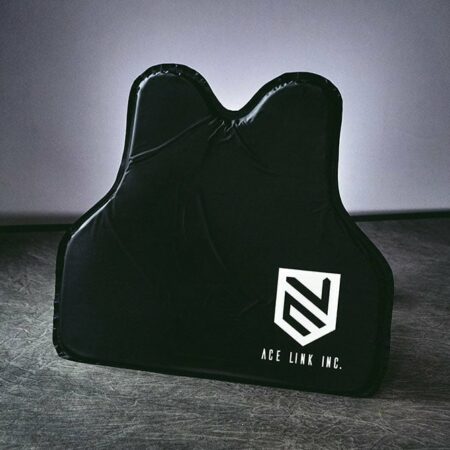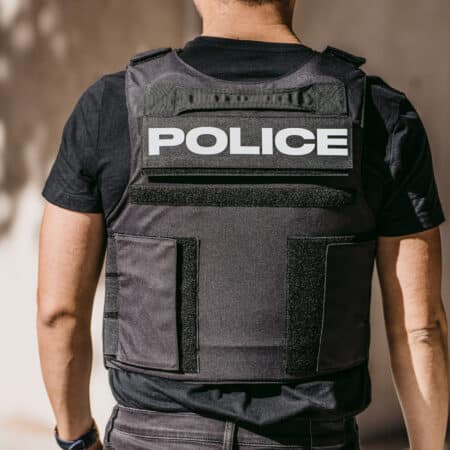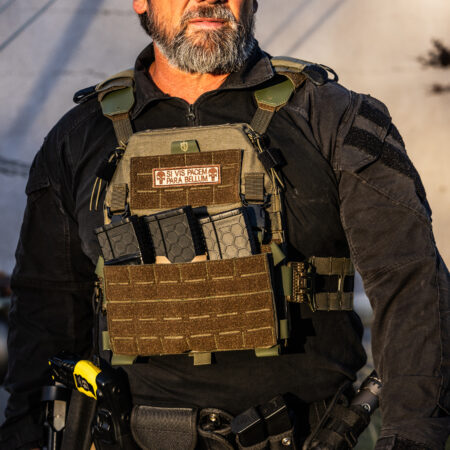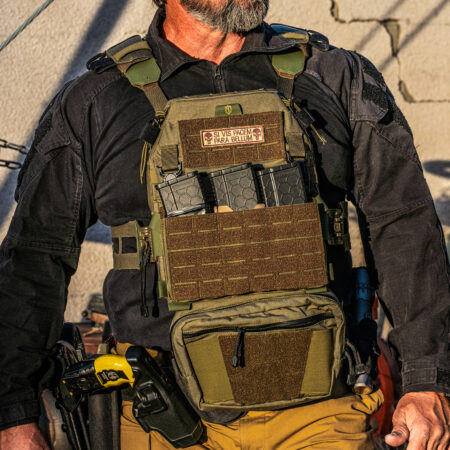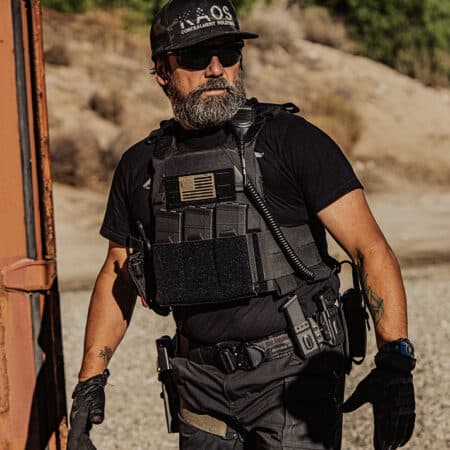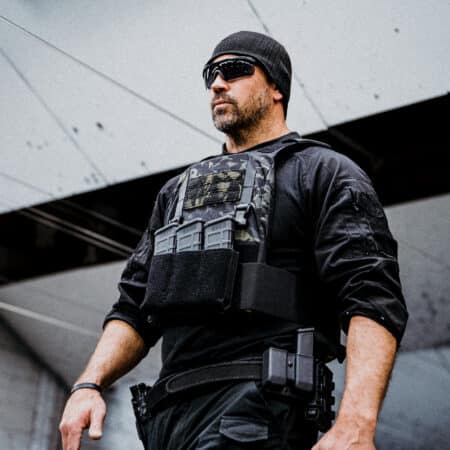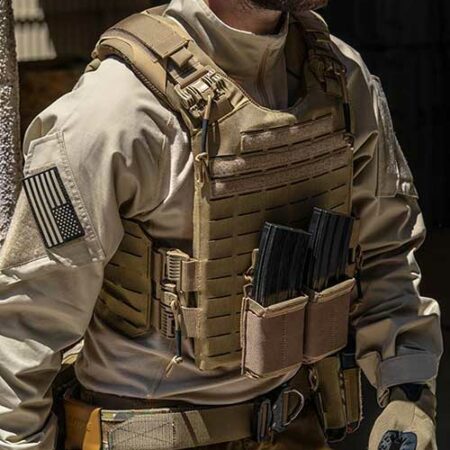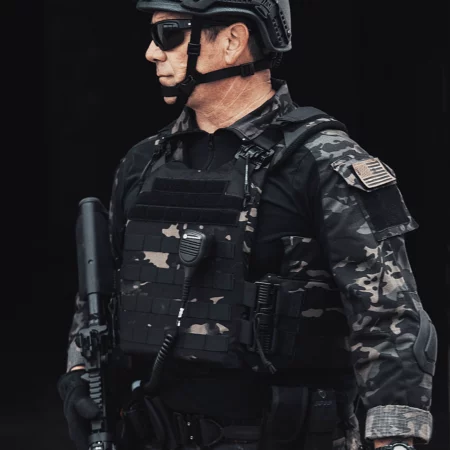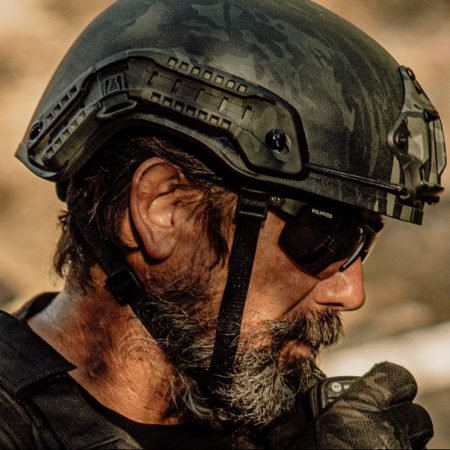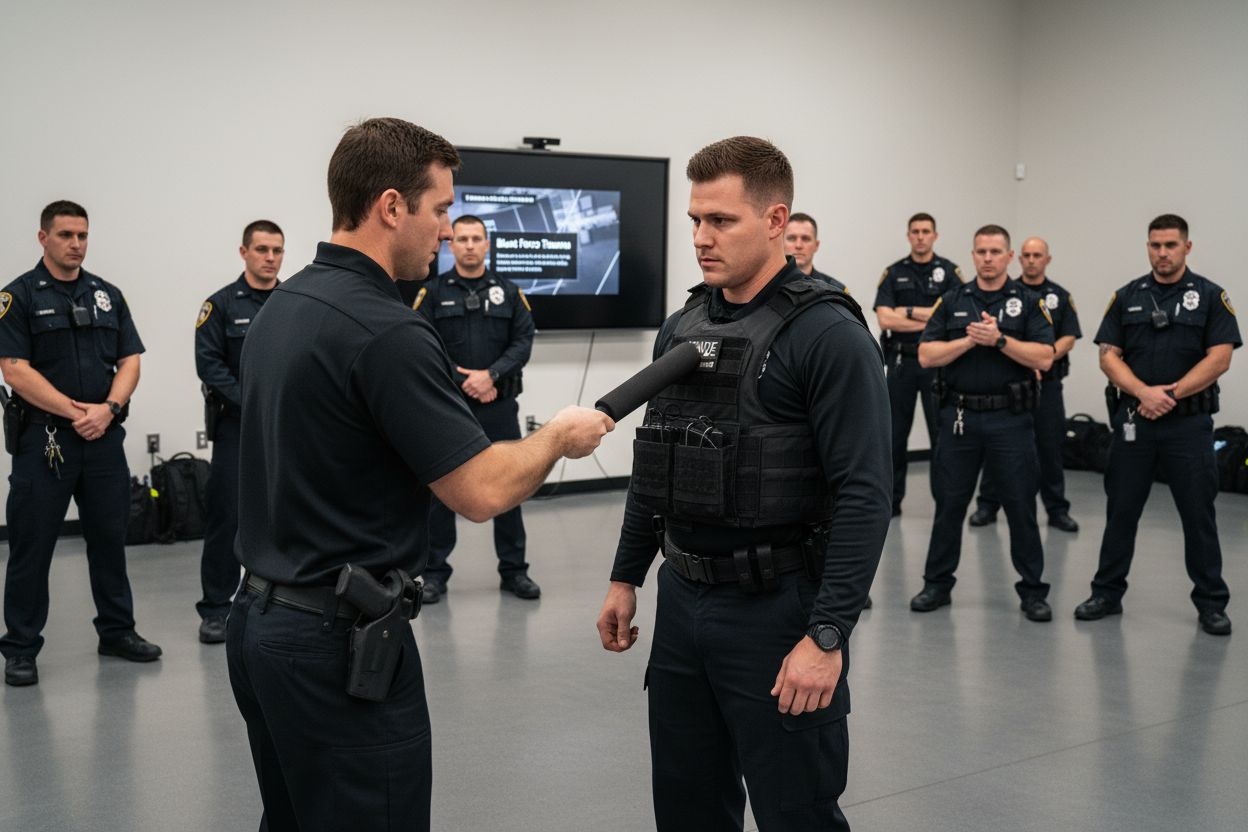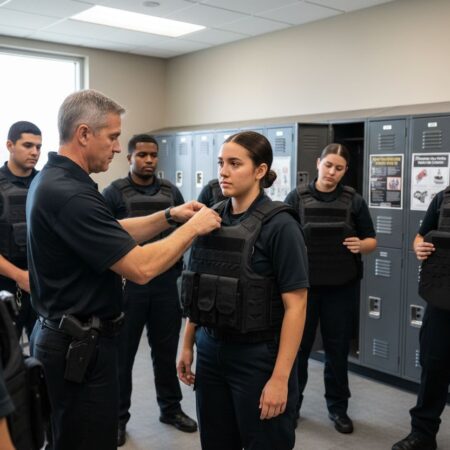- Table of Contents
- Quick Summary
- What is Blunt Force Trauma and How is it Defined?
- The Importance of Body Armor in Preventing Injury
- How Bulletproof Vests Mitigate Blunt Force Trauma
- Key Materials and Technologies in Modern Vests
- Real-World Implications and Case Studies of Blunt Force Trauma
- Take Action Against Blunt Force Trauma: Choose Proven Protection
- Frequently Asked Questions
- Recommended
Blunt force trauma affects thousands each year, causing everything from mild bruises to devastating internal injuries. Over 80 percent of emergency trauma cases involve blunt force impacts. Most people assume that injuries like these are just bad luck or unavoidable accidents. But modern body armor uses advanced materials to turn what should be a deadly blow into something survivable, changing how we think about personal protection in dangerous situations.
Table of Contents
- What Is Blunt Force Trauma And How Is It Defined?
- The Importance Of Body Armor In Preventing Injury
- How Bulletproof Vests Mitigate Blunt Force Trauma
- Key Materials And Technologies In Modern Vests
- Real-World Implications And Case Studies Of Blunt Force Trauma
Quick Summary
| Takeaway | Explanation |
|---|---|
| Blunt force trauma occurs without penetration | This injury results from significant impact forces, unlike penetrating injuries that break the skin. |
| Impact severity depends on three factors | Velocity, mass, and anatomical location of impact influence the extent of damage sustained. |
| Body armor redistributes kinetic energy | Protective gear is designed to absorb and spread the energy from impacts, reducing injury risk. |
| Advanced materials enhance armor effectiveness | Modern vests use composites like UHMWPE and ceramics to maximize protection while maintaining flexibility and comfort. |
| Understanding trauma can inform protective strategies | Knowledge of blunt force trauma dynamics aids in selecting appropriate protective gear for high-risk scenarios. |
What is Blunt Force Trauma and How is it Defined?
Blunt force trauma represents a complex physical injury mechanism where significant mechanical force impacts the human body without creating an open wound or penetration. Unlike penetrating injuries that involve sharp objects breaking the skin, blunt force trauma occurs through powerful contact with a dull or broad surface, transferring substantial kinetic energy into body tissues.
Mechanical Characteristics of Blunt Force Impact
When an external force strikes the body, it generates intense compression, shearing, and stretching of tissues and underlying structures. This energy transfer can cause multiple types of damage ranging from superficial bruising to catastrophic internal injuries. Medical researchers from Johns Hopkins University explain that the severity depends on three primary factors:
- Velocity of the impacting object
- Total mass and momentum of the striking surface
- Anatomical location of the impact
Physiological Response and Potential Consequences
The human body experiences blunt force trauma through complex biomechanical interactions. Upon impact, tissues compress, stretch, and potentially rupture depending on the force magnitude. Blood vessels can tear, organs might bruise or hemorrhage, and skeletal structures could fracture. Critical systems most vulnerable to blunt force trauma include:
- Thoracic cavity (lungs and heart)
- Abdominal organs
- Neurological structures
- Musculoskeletal framework
In protective equipment contexts, understanding blunt force trauma becomes crucial. Bulletproof vests are specifically engineered to distribute and dissipate kinetic energy, preventing direct tissue damage from projectile impacts. The vest’s materials and structural design work to absorb and spread force, transforming potentially fatal direct energy transfer into a more manageable distributed impact.
According to National Institutes of Health research, blunt force trauma represents a significant public health concern, accounting for substantial emergency medical interventions and long-term rehabilitation requirements across multiple demographic groups.
The Importance of Body Armor in Preventing Injury
Body armor serves as a critical protective barrier designed to mitigate and reduce the potential for severe injury in high-risk environments. By distributing and absorbing kinetic energy from potential impacts, body armor transforms potential life-threatening scenarios into manageable protective situations.

Research from the National Institute of Justice indicates that modern body armor technologies have dramatically reduced fatal injuries for professional personnel in dangerous occupational settings.
Protective Mechanisms and Energy Dissipation
The fundamental purpose of body armor extends far beyond simple physical obstruction. Advanced protective gear utilizes sophisticated material science principles to interrupt and redistribute violent energy transfer. When a projectile or blunt force strikes body armor, multiple protective layers work simultaneously to:
- Capture and spread incoming kinetic energy
- Prevent direct tissue penetration
- Minimize potential internal trauma
- Reduce overall shock transmission to the body
Professional and Personal Protection Applications
Body armor’s importance transcends professional military and law enforcement contexts. Civilians facing potential personal security risks increasingly recognize the value of protective equipment. Our guide on body armor buying tips highlights how selecting appropriate protective gear can mean the difference between life-threatening injury and manageable impact.
Key professional sectors requiring robust body armor include:
- Law enforcement personnel
- Military service members
- Security professionals
- Emergency medical technicians
- Journalists working in conflict zones
Beyond immediate physical protection, body armor represents an investment in personal safety and psychological preparedness. By providing a tangible sense of security, these protective systems enable professionals to perform critical duties with increased confidence and reduced vulnerability. The technological evolution of body armor continues to push boundaries, integrating advanced materials like high-performance composites and ceramics to enhance protective capabilities while maintaining lightweight, comfortable designs.
How Bulletproof Vests Mitigate Blunt Force Trauma
Bulletproof vests represent sophisticated engineering solutions designed to transform potentially catastrophic impacts into manageable energy distributions. Their core function extends beyond simple projectile prevention, focusing on sophisticated biomechanical protection mechanisms that interrupt and dissipate potentially life-threatening kinetic forces. Ballistic research from the National Institute of Justice demonstrates that advanced protective gear can significantly reduce trauma transmission through strategic material design.
Energy Absorption and Redistribution Principles
The fundamental protective strategy of bulletproof vests involves converting direct, concentrated energy into dispersed, manageable force. Multiple layers of high-performance materials work collaboratively to interrupt and spread incoming kinetic energy, preventing concentrated impact points that could cause severe internal injuries. These layers typically include:
- Aramid fiber networks
- Ceramics
- Specialized polymer composites
- High-tensile strength fabrics
Mechanical Protective Mechanisms
When a projectile strikes a bulletproof vest, a complex energy management process begins immediately. The vest’s intricate layered structure catches and deforms the incoming object, dramatically reducing its penetrative potential. By expanding the impact zone and increasing contact surface area, the vest transforms a potentially fatal direct strike into a distributed, less harmful interaction.

Professional body armor panel selections play a critical role in this protective mechanism. Different panel configurations offer varying levels of protection, with materials specifically engineered to absorb and redirect destructive forces.
Key protective strategies include:
- Immediate energy absorption
- Force distribution across multiple layers
- Preventing direct tissue contact
- Minimizing shock wave transmission
Beyond physical protection, bulletproof vests represent a nuanced intersection of materials science, biomechanical engineering, and human physiological understanding. The ongoing technological evolution continues to push boundaries, creating increasingly sophisticated protective solutions that balance weight, flexibility, and comprehensive safety mechanisms.
Key Materials and Technologies in Modern Vests
Modern bulletproof vest technologies represent a sophisticated fusion of advanced materials science and engineering principles. These protective systems leverage cutting-edge composite materials designed to provide maximum protection while maintaining lightweight, flexible configurations. Research from the National Institute of Standards and Technology demonstrates the continuous evolution of protective technologies that push the boundaries of human safety engineering.
Advanced Material Composition
The fundamental breakthrough in body armor technology lies in developing materials that can rapidly dissipate and redistribute kinetic energy. Contemporary bulletproof vests utilize a complex matrix of high-performance materials, each selected for specific protective characteristics:
- Ultra-high-molecular-weight polyethylene (UHMWPE)
- Aramid fiber composites
- Ceramic plate reinforcements
- Advanced polymer networks
- Specialized synthetic fiber configurations
Technological Innovation in Protective Design
Engineers have progressively refined body armor technologies to create multi-layered protective systems that offer unprecedented levels of personal protection. These innovations focus on creating materials that can instantaneously respond to impact, transforming potentially fatal energy transfers into manageable force distributions.
Our advanced Cataphract ULTRA vest exemplifies this technological progression, incorporating next-generation materials that balance protection, flexibility, and comfort. Key technological advancements include:
- Nanotechnology-enhanced fiber structures
- Adaptive energy-dissipation mechanisms
- Improved thermal regulation capabilities
- Reduced overall weight and increased mobility
The ongoing technological evolution in body armor represents a critical intersection of materials engineering, biomechanics, and human protection strategies. By continuously refining protective technologies, manufacturers are developing increasingly sophisticated solutions that offer comprehensive personal safety without compromising user mobility and comfort.
Below is a table comparing key materials used in modern bulletproof vests, summarizing their primary features and protective benefits for the wearer.
| Material | Primary Role in Protection | Key Features |
|---|---|---|
| Ultra-high-molecular-weight polyethylene (UHMWPE) | Absorbs and disperses energy | Lightweight, high tensile strength, flexible |
| Aramid fiber composites | Captures and distributes impact force | High durability, heat-resistant, flexible |
| Ceramic plate reinforcements | Stops and breaks up projectiles | Hard, rigid, lightweight, effective against high-velocity threats |
| Advanced polymer networks | Provides flexibility and impact damping | Enhanced comfort, adaptable structure |
| Specialized synthetic fiber configurations | Adds to impact resistance | Customizable protection, tailored properties |
Real-World Implications and Case Studies of Blunt Force Trauma
Blunt force trauma represents a significant medical and operational challenge across multiple high-risk professional environments. Understanding real-world scenarios provides critical insights into the complex dynamics of impact injuries and the life-saving potential of advanced protective technologies.
This table outlines the main occupational sectors at high risk for blunt force trauma and briefly describes how body armor contributes to mitigating those risks.
| Occupational Sector | Common Risk Factors | Body Armor Protective Benefits |
|---|---|---|
| Law enforcement & military | Physical altercations, projectiles | Reduces blunt force injuries and penetration |
| Corrections officers | Inmate confrontations, riots | Protects against strikes and stabbing attacks |
| Emergency response teams | Collisions, hazardous environments | Shields vital organs during active operations |
| Security/private protection | Attacks, high-threat encounters | Absorbs and redistributes kinetic impacts |
| Tactical unit operators | High-risk entry, close-quarters combat | Enhances survivability in high-impact situations |
Occupational Impact Analysis
Professional environments with elevated blunt force trauma risks demand comprehensive protective strategies. Critical sectors experiencing frequent potential trauma exposure include:
- Law enforcement and military personnel
- Corrections officers
- Emergency response teams
- Security and private protection professionals
- Tactical unit operators
Documented Protective Performance Scenarios
Empirical evidence demonstrates that modern body armor technologies can transform potentially fatal encounters into manageable incidents. Professional body armor selections like the Cataphract ULTRA have proven instrumental in preventing catastrophic injuries across various high-risk scenarios.
Key documented protective performance indicators include:
- Reduction of penetrative injury risks
- Minimization of internal organ damage
- Decreased likelihood of long-term medical complications
- Improved survivability in high-impact confrontations
The quantitative and qualitative data surrounding blunt force trauma interventions underscore a critical truth: advanced protective technologies are not merely equipment, but sophisticated life-preservation systems. By understanding the nuanced mechanisms of energy transfer and impact mitigation, professionals can make informed decisions that potentially mean the difference between life and death in high-stakes environments.
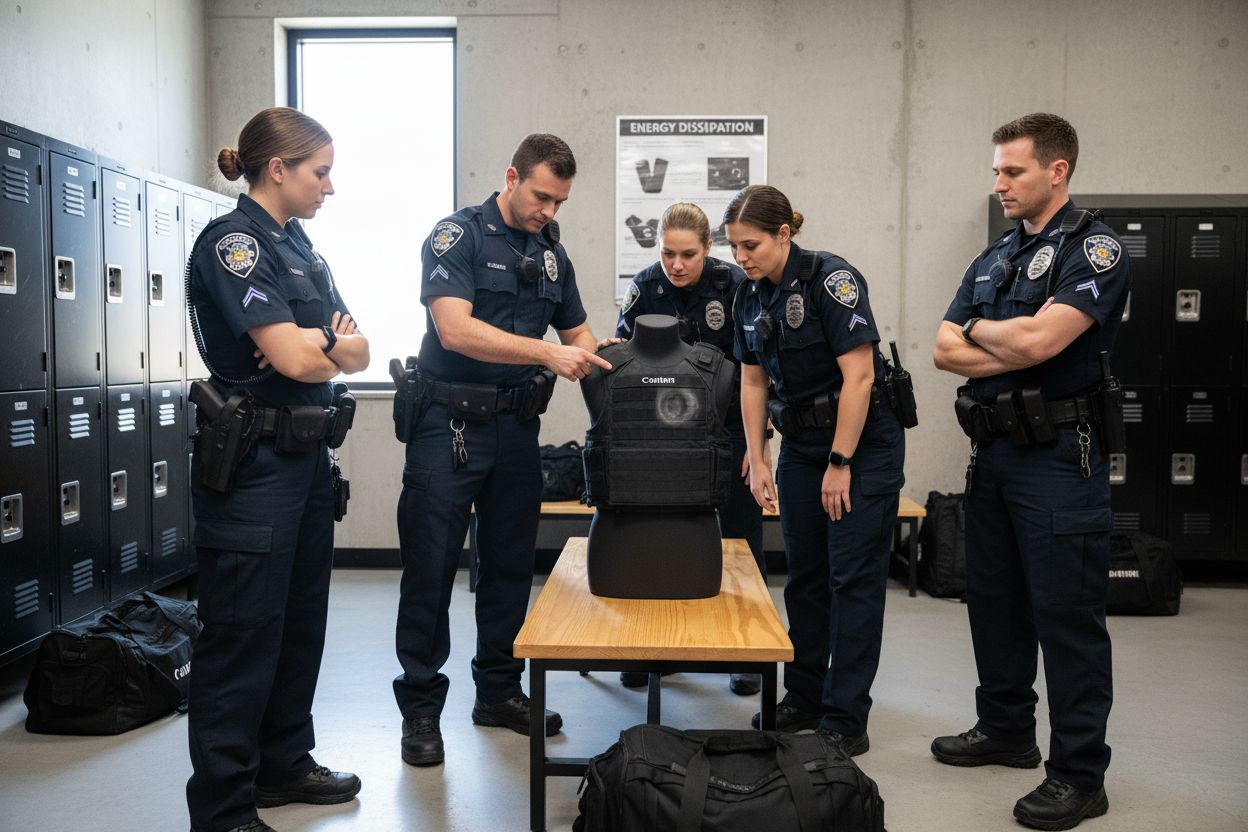
Take Action Against Blunt Force Trauma: Choose Proven Protection
Understanding how blunt force trauma can turn a dangerous encounter into a life-altering injury is more than theory—it is about protecting yourself or your team from potentially catastrophic outcomes. The article has explored how energy transfer from a serious impact can lead to unseen internal damage, even when the skin is not broken. Whether you are in law enforcement, a security role, or a security-conscious civilian, you need equipment that not only stops projectiles, but also minimizes the risk of internal trauma by truly absorbing and dispersing kinetic force.
Do not leave your safety to chance. Visit AcelinkArmor.com today and explore our bulletproof vests crafted with advanced materials that address the real challenges of blunt force trauma. Each product is engineered for maximum energy dissipation and superior comfort, meeting strict ballistic protection standards. Ready to make the critical move toward better protection? Discover our full line and take the next step toward reliable safety by browsing our bulletproof vest collection. Your safety cannot wait—equip yourself now with solutions trusted by professionals who face these risks daily.
Frequently Asked Questions
What is blunt force trauma?
Blunt force trauma refers to injuries caused by a significant mechanical force impacting the body without creating an open wound. It can result in various types of damage, from superficial bruising to severe internal injuries.
How do bulletproof vests mitigate blunt force trauma?
Bulletproof vests are designed to absorb and redistribute kinetic energy from impacts. They use advanced materials that prevent direct damage to tissues by dispersing the force over a larger area, reducing the trauma sustained during impact.
What materials are commonly used in modern bulletproof vests?
Modern bulletproof vests typically incorporate high-performance materials such as aramid fibers, ultra-high-molecular-weight polyethylene, ceramic plates, and specialized synthetic composites, each chosen for their capacity to absorb and disperse energy effectively.
Why is choosing the right body armor important for personal safety?
Selecting the appropriate body armor is crucial for personal safety as it can significantly reduce the likelihood of fatal injuries in high-risk environments. Properly engineered vests provide effective protection against blunt force trauma while allowing for mobility and comfort.
Recommended
- Stab-Proof and Bulletproof Armor Panel 6×13″ – Ace Link Armor
- Backpack Armor 11×14″ Level 3A – Ace Link Armor
- Backpack Armor 11×17″ Level 3A – Ace Link Armor
- Backpack Armor 10×18″ Level 3A – Ace Link Armor



